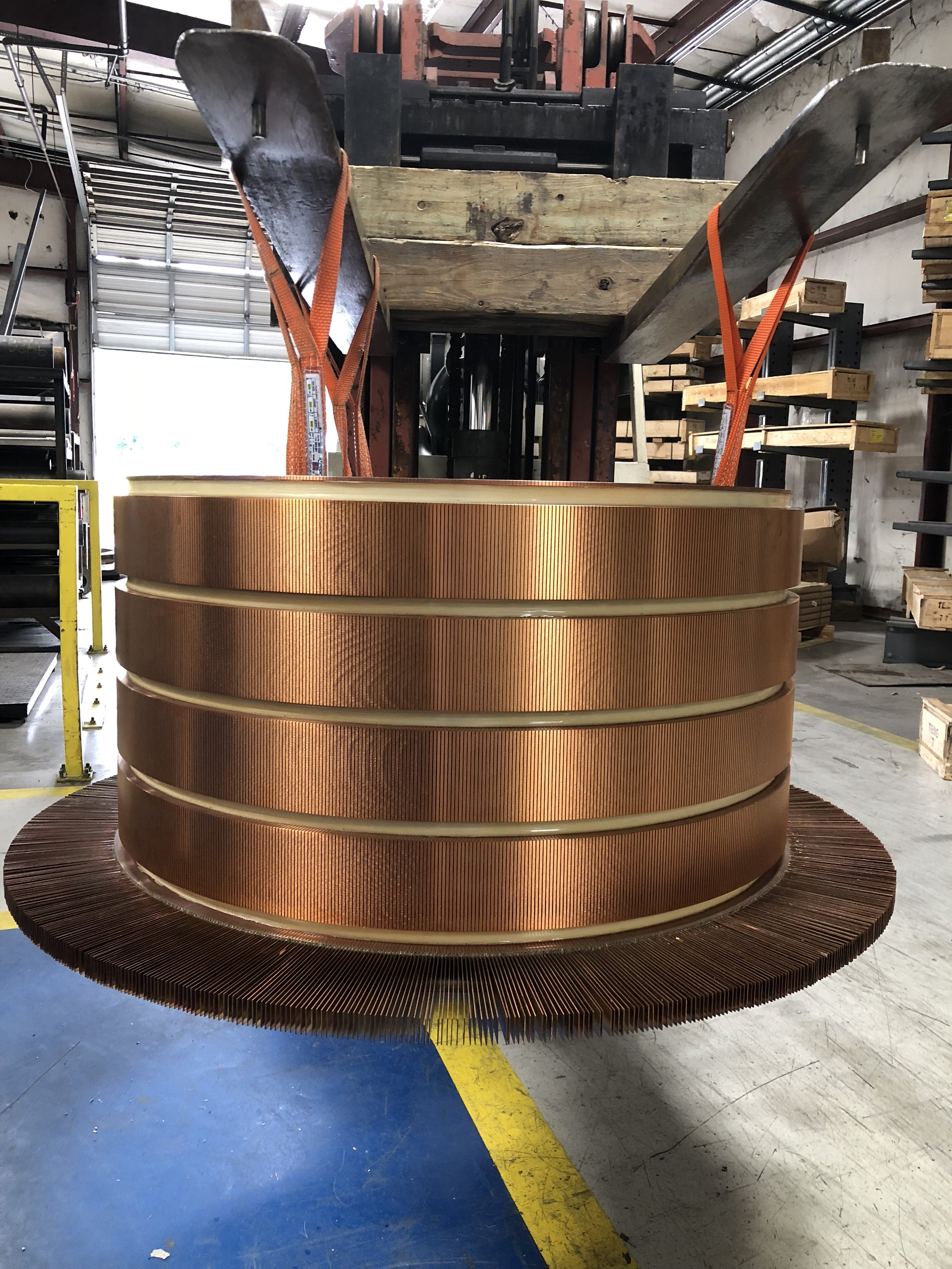GLASSBAND COMMUTATORS
Glassbound, or "glassband," commutators were first designed by General Electric in 1960 for their redesigned line of 580 and 8000 frame machines, and later for their MD800 Armored Motors. Though performance of these commutators is good, reception by end-users and motor repair facilities has sometimes been less favorable because of the difficulty in field repair of the units. Whereas with v-ring commutators, bolts can be tightened and v-rings replaced, glassbound commutators are virtually maintenance-free. In addition, these glassbound comms are significantly lighter in weight than their v-ring equivalents, and under normal duty requirements, routinely out-last v-ring units by 50%.
The only restraining force on glassbound comms are the res-i-glass bands. This material is made from high tensile glass yarns laid parallel and bonded with fully catalyzed thermosetting resins. The glassbound commutator is set with an interference fit of approximately 0.030" to a mica wrapped and cured steel hub. The retained interference fit, measured by the growth of the segment pack, should be, at minimum, 0.015". The inside of the segment pack is bored specific to the cured mica-wrapped hub, and machining must be smooth with no chatter. Glassband grooves are cut after the segment pack is assembled to the core.
Finally the commutator is banded to an OEM specified number of wraps applied at 600 psi. The bands are applied multi-stage to ensure maximum strength. The retaining force of these bands, as an example, on a commutator with 6 bands on a brush surface diameter of 19.625", operating at 1800 rpm is calculated to 60,000 psi. Or 4 times the safety factor for the res-i-glass under the UTS listed spec for this Class H material. Once installed on the armature, glassbands on the commutator should be coated with Viton® (GE Part#Z36A173329AAG1) which seals the banding to the copper and mica segment pack ensuring that contamination cannot infiltrate at these points. This is highly recommended as contamination may result in burning of the glassband from the interior, which, though not visible, would result in failure of the unit.
Note that if the commutator does not have a glassband directly in front of the riser, it will have a band behind the riser, increasing your total bar length by typically 0.937" to 1.062".
Glassband Commutator with fans being QC'ed
Because of the need for a specific interference fit to the core, and due to the thinness of the copper bar once grooved, glassband commutators cannot be reinsulated (i.e. the copper bars cannot be re-used). However, rebanding these commutators can be appropriate as a field repair measure, and we will be pleased to assist you with any information you require should you wish to proceed in this way.




